Common Plant diseases – Symptoms and signs
Common names of diseases are always based on their key symptoms. These symptoms are described below in detail.
- Anthracnose:
- Big vein:
- Black scurf:
- Blackening:
- Blast:
- Blight:
- Blister blight:
- Boll rot:
- Brown rot:
- Browning:
- Bud blight:
- Bud rot:
- Bunchy top:
- Bushy stunt:
- Canker:
- Charcoal rot:
- Chlorosis:
- Club root:
- Collar rot:
- Crown gall:
- Crown rot:
- Curly top:
- Damping-off:
- Die back:
- Downy mildew:
- Dry rot:
- Dwarf:
- Ear rot:
- Enation:
- Etch:
- False smut:
- Fern-leaf:
- Fire blight:
- Fleck:
- Flower color-breaking:
- Foot rot:
- Freckle:
- Fruit rot:
- Gray mold:
- Green ear:
- Gummosis:
- Head rot:
- Kernel rot:
- Leaf blight:
- Leaf blotch:
- Leaf crinkle:
- Leaf crumple:
- Leaf curl:
Anthracnose:
A characteristic lesion is circular to angular, sometimes irregular sunken spot with a grayish-black center and yellow margin in leaves stems, and fruit (e.g., grapevine anthracnose).
Areolate mildew:
Mildew growth in the area between veins on a leaf (e.g., cotton areolate mildew).
Big vein:
A condition where veins enlarge (e.g., Lettuce big vein virus disease).
Black scurf:
Black flaky or scaly matter adhering to the surface of a plant part (e.g., black scurf of potato).
Blackening:
Intensive necrosis that leads to blackening of tissues (e.g., Potato black ringspot virus disease).
Blast:
A disease that kills plants suddenly (e.g., rice blast).
Blight:
A plant disease characterized by withering and shriveling without rotting (e.g., late blight of potato).
Blister blight:
A bubble-like elevation on the surface of diseased leaf results in withering and shriveling of the leaf (e.g., tea blister blight).
Boll rot:
Decay of boll, a fruit of plants such as cotton. Boll consists of a rounded capsule containing the seeds (e.g., cotton boll rot).
Brown rot:
A condition in which decaying tissues turn brownish (e.g., potato brown rot).
Browning:
Cell death leads to necrosis, which leads to the browning of tissues (e.g., Pea early browning virus disease).
Bud blight:
Necrosis of buds (Groundnut bud blight virus disease).
Bud rot:
Decay of buds (e.g., bud rot of coconut).
Bunchy top:
Leaves arise in clusters, giving a rosette appearance at the top (e.g., Banana bunchy top virus disease).
Bushy stunt:
The diseased plant is severely stunted and its shoots are crowded, giving a bushy appearance (e.g., Tomato bushy stunt virus disease).
Canker:
A corky outgrowth formed on leaves, twigs, and fruit (e.g., citrus canker).
Charcoal rot:
Decaying tissues turn charcoal (black) in color (e.g., corn charcoal rot).
Chlorosis:
Yellowing or whitening may be distributed in the entire plant due to a partial failure of chlorophyll development in leaves and other plant parts, causing more or less uniform discoloration (e.g., Tomato chlorosis virus disease, Lettuce chlorosis virus disease).
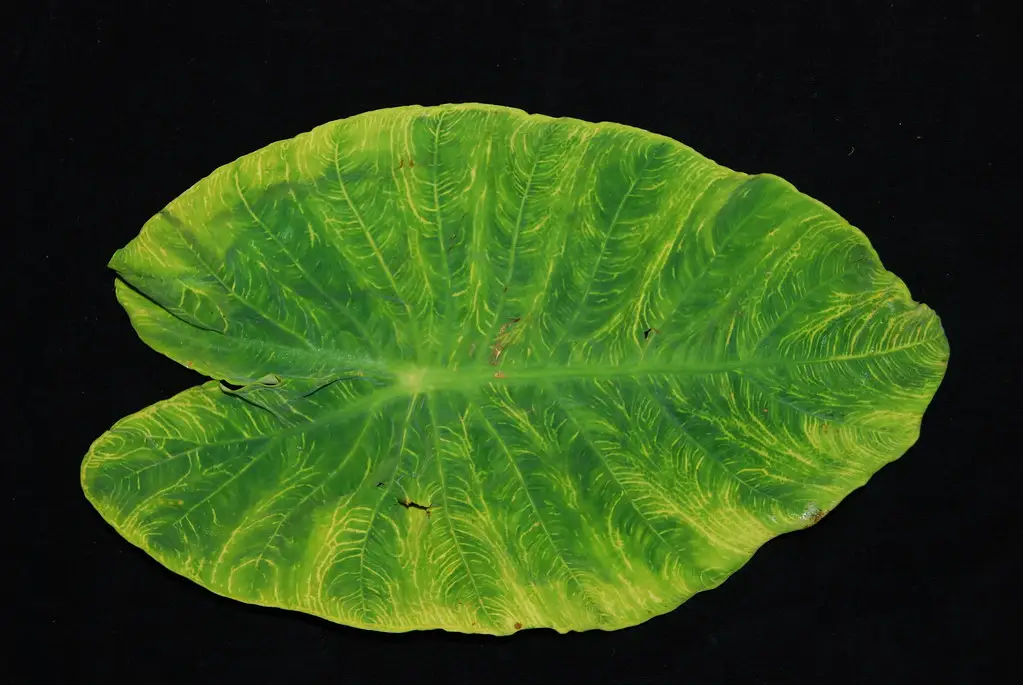
Club root:
Roots are malformed into club-like structures due to a thick, fleshy growth of roots. The root tips are malformed, leaving the basal portions of the root mostly normal (e.g., club root of cabbage).
Collar rot:
Decay of the collar region of seedlings at the post emergence stage (e.g., tobacco collar rot).
Crown gall:
Abnormal outgrowth or swelling is produced due to hyperplasia and hypertrophy of host cells (e.g., crown gall of several crops, such as apple, peach, and pear).
Crown rot:
Rotting of the crown that may spread to the root (e.g., oat crown rot).
Curly top:
Inward rolling of the leaves with puckering and blister-like elevation (e.g., Beet curly top virus disease).
Damping-off:
Rotting and collapsing seedlings at soil level or preventing seedling emergence (e.g., damping-off of vegetables and tobacco).
Die back:
Death of diseased plant organs mainly stems or branches, from the tip backward (e.g., eutypa die back of grape).
Downy mildew:
Fungal growth that appears as a coating of soft, fine hair on the surface of the host (e.g., downy mildew of grapevine).
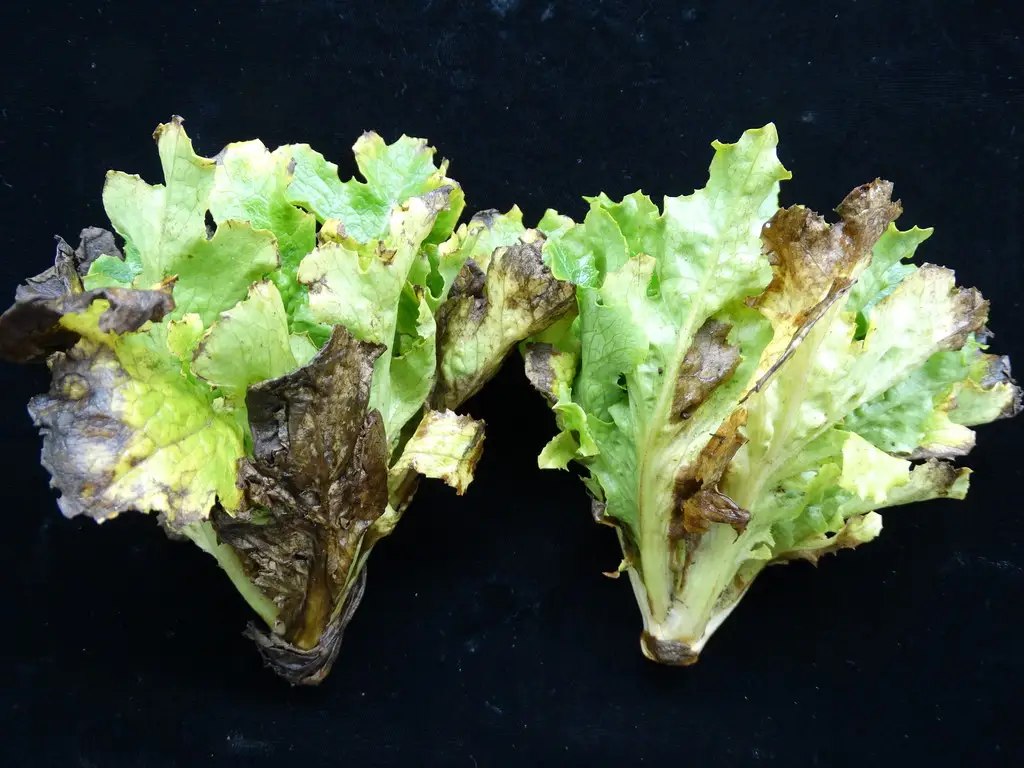
Dry rot:
Putrefactive decomposition of tissues (e.g., dry root rot of citrus and peanut).
Dwarf:
Plant growth is stunted due to disease (e.g., rice yellow dwarf dis-ease).
Ear rot:
Decay of the ear of a cereal plant that contains the seeds, grains, or kernels (e.g., corn diplodia ear rot).
Enation:
Small outgrowths on leaves, especially on veins and stems (e.g., Pea enation mosaic virus disease).
Etch:
Desiccation of superficial tissue (epidermal cells) (e.g., Tobacco etch virus disease).
False smut:
Individual grains of the panicle are transformed into greenish spore balls. At first, the spore balls are smooth and yellow and are covered by a membrane. When the membrane bursts, the ball’s color becomes orange, yellowish green, or greenish black.
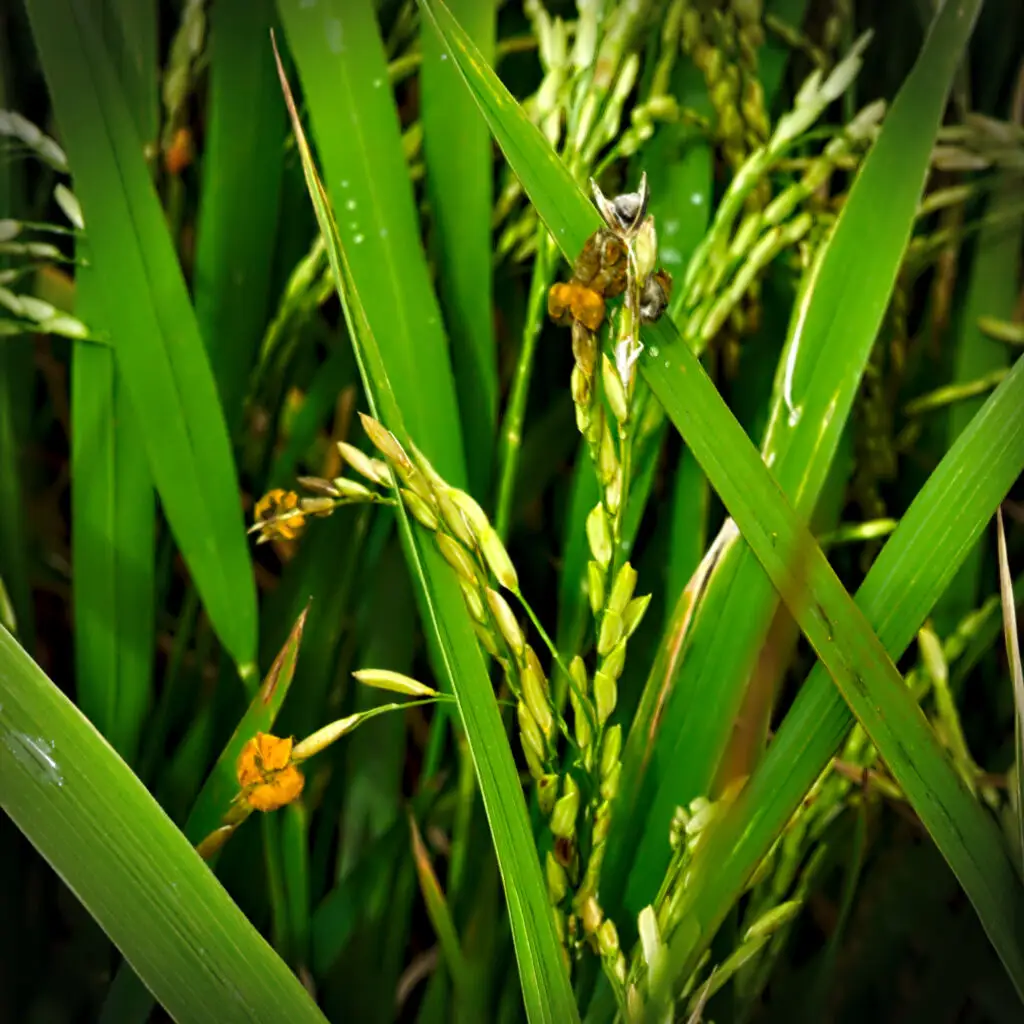
The surface of the ball cracks subsequently. When the balls are cut open, the innermost layer is yellowish, the next layer is orange, and the outermost layer is greenish (e.g., false smut of rice).
Fern-leaf:
Reduced leaf blade development in proportion to the midrib leads to fern-leaf development (e.g., Asparagus fern-leaf virus disease).
Fire blight:
Diseased blossoms turn brown or black and exhibit a burnt appearance (e.g., fire blight of apple).
Fleck:
Small discolored parts are sharply bordered but circular (e.g., Parsnip yellow fleck virus disease).
Flower color-breaking:
Mosaic or variegation of petals of flowers (e.g., Tulip color-breaking virus disease).
Foot rot:
Decay of the basal portion of a plant (e.g., rice foot rot).
Freckle:
A small brownish spot or small area of discoloration; a freckle is smaller than a spot (e.g., banana freckle).
Fruit rot:
Decay of fruit (e.g., strawberry alternaria fruit rot).
Gray mold:
A condition in which infected blossoms and fruit become coated with the fine gray fruiting stalks and spores of the fungal pathogen (e.g., gray mold [Botrytis cinerea] of strawberry).
Green ear:
The floral parts of the ear of a cereal plant are transformed into a green leafy structure; in the spikelet, the glumes, lemmae, paleae, stamens, and pistil are all transformed into green leafy structures (e.g., green ear of pearl millet).
Gummosis:
Secretion of gum as a symptom of the disease (e.g., citrus gummosis).
Head rot:
Decay of the head of plants such as sunflowers, consisting of fertilized inflorescence with developed seeds and grains (e.g., sunflower rot).
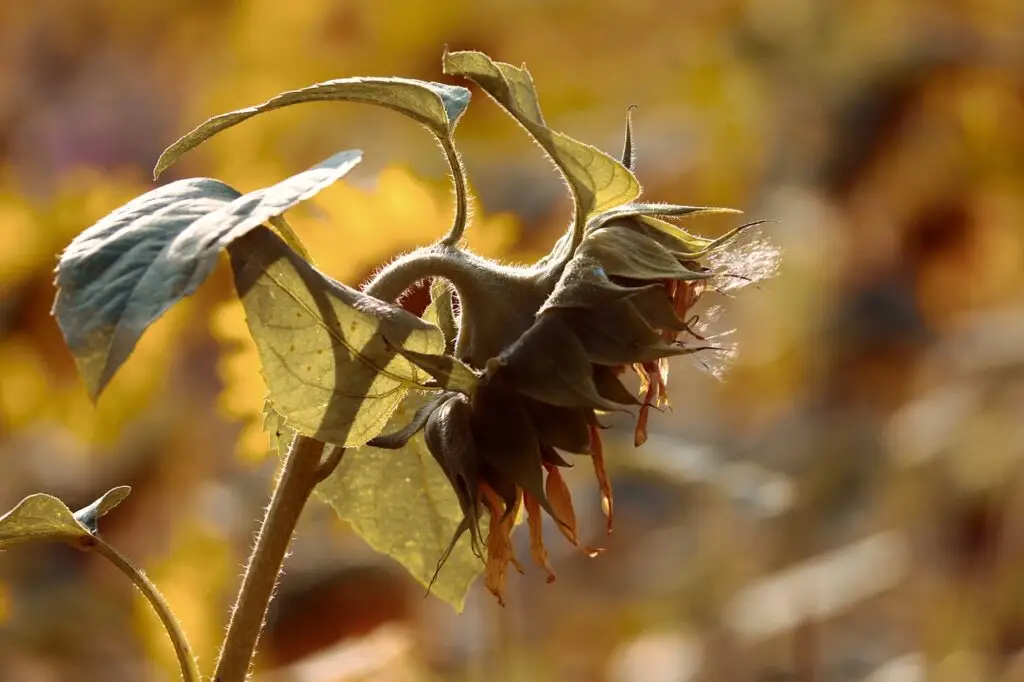
Kernel rot:
Decay of kernels (e.g., corn fusarium kernel rot).
Leaf blight:
The entire leaf may be blighted (e.g., northern corn leaf blight).
Leaf blotch:
Irregular, large, discolored, usually black spots (e.g., barley leaf blotch).
Leaf crinkle:
Wrinkles form in the infected leaf (e.g., Turnip crinkle virus disease).
Leaf crumple:
The infected leaf appears crushed, forming wrinkles or creases (similar to marks produced by folding) (e.g., cotton leaf crumple).
Leaf curl:
Leaf margins turn downward and come together at the bottom, exposing the middle upper surface of the leaf blade; the disease results in the downward curling of leaves; the distortion, puffing, and crinkling of a leaf resulting from the unequal growth of its two sides (e.g., Tobacco leaf curl virus disease).
Leaf roll:
A condition where the leaf tends to roll (e.g., Potato leaf roll virus disease).
Leaf spots:
Several types of spots are seen in infected leaves. Water-soaked spots are common in bacteria-infected leaves; circular, cylindrical, irregular, or angular spots are common in fungus and bacteria-infected leaves(e.g., Sigatoka leaf spot of banana).
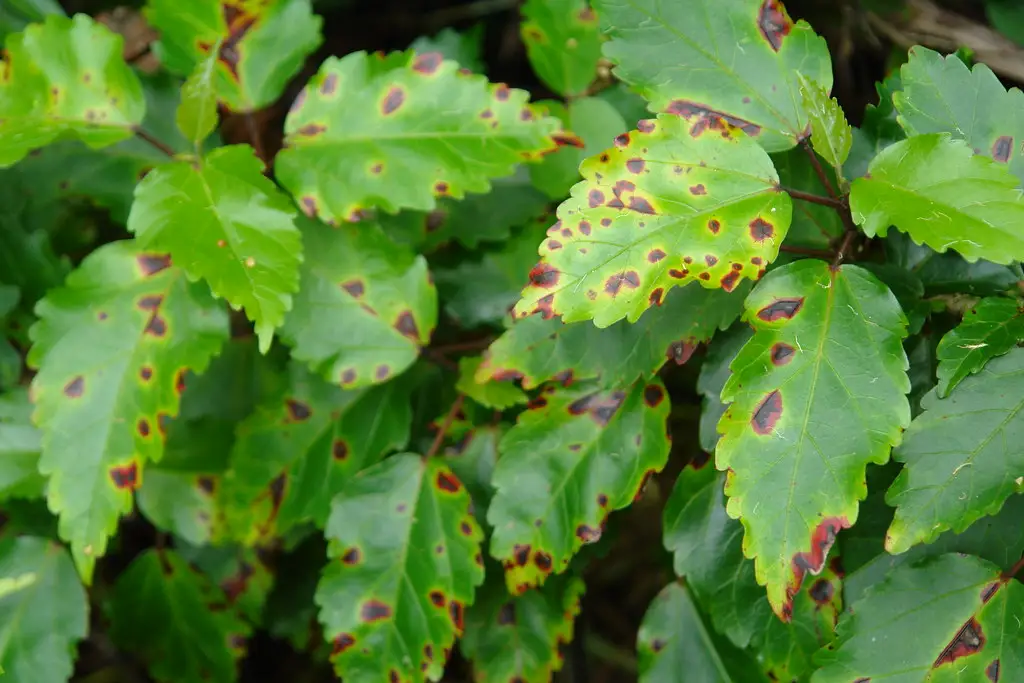
Line pattern:
Infected leaves show an arrangement of repeated lines (e.g., Pelargonium line pattern virus disease).
Little leaf:
In diseased plants, the leaves are malformed into tiny chlorotic structures (e.g., little leaf of eggplant).
Mosaic:
Infected leaves show shades of green and yellow areas that are usually irregularly angular, but sharply delimited. Mosaic is characterized by a patchy variation of normal green color (e.g., Tobacco mosaic virus disease).
Mottle:
Diffusely bordered variegation (differently colored spots), i.e., a pattern of white patches in leaves and other plant parts, results from chlorophyll’s failure to develop in certain cells.
Mottle is an arrangement of spots or confluent blotches of different shades, as of the surface of marble (e.g., Tomato mottle virus disease, Bean pod mottle virus disease).
Necrosis:
A symptom in which cells die in patches (e.g., Rice necrosis virus disease).
Phyllody:
The floral parts are transformed into green leafy structures (e.g., phyllody of sesamum).
Powdery mildew:
Fungal growth seen as a powdery growth on the host’s surface (e.g., wheat powdery mildew).
Pox:
Infected leaves show various types of mottling: light green to yellowish-green blotches. The fruits are poxed (i.e., pustules form on the skin) (e.g., Plum pox virus disease).
Red rot:
Decaying tissues appear reddish in color (e.g., sugarcane red rot).
Reddening:
Red pigments predominate (e.g., Carrot red leaf virus disease).
Rhizome rot:
Decay of rhizome (e.g., turmeric rhizome rot).
Ring spot:
Infected leaves show ringlike circular spots (e.g., Groundnut ringspot virus disease, Carnation ring spot virus disease, Citrus ring spot virus disease).
Root rot:
Root decay leads to wilting in plants. In the field, the plants’ sudden and complete wilting is seen. The major difference between wilt and root rot is the discoloration of the stem.
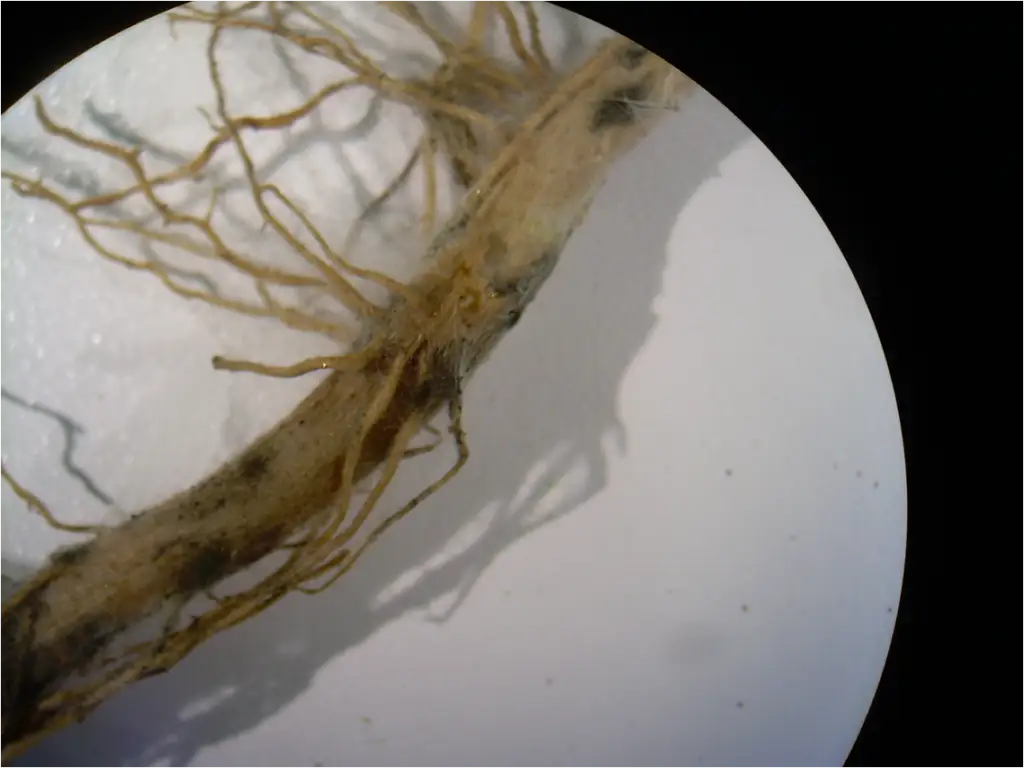
When the bark of plants is removed, black streaks can be seen extending upward to the branches and downward to the lateral roots. Root rot, which also leads to wilting, is characterized by root decay (e.g., corn pythium root rot, cotton black root rot).
Rosette:
Rosetting (decoration resembling a rose) is formed due to impeded inter nodal expansion at the stem tips; crowding of the foliage excessively in the form of a rosette (e.g., Groundnut rosette virus disease).
Rot diseases:
Decay of tissues. Several types of rot symptoms are seen in crops.
Rugose:
The growth of veinal tissue is retarded (e.g., Bean rugose mosaic virus disease).
Rust:
Rust-like pustules (small elevated spots resembling pimples). Several types of rust diseases are known, and the color of their pustules refers to them: Brown rust (brown [leaf] rust of wheat), black rust (black [stem] rust of wheat), yellow rust (yellow [stripe] rust of wheat), and white rust (white rust of crucifers).
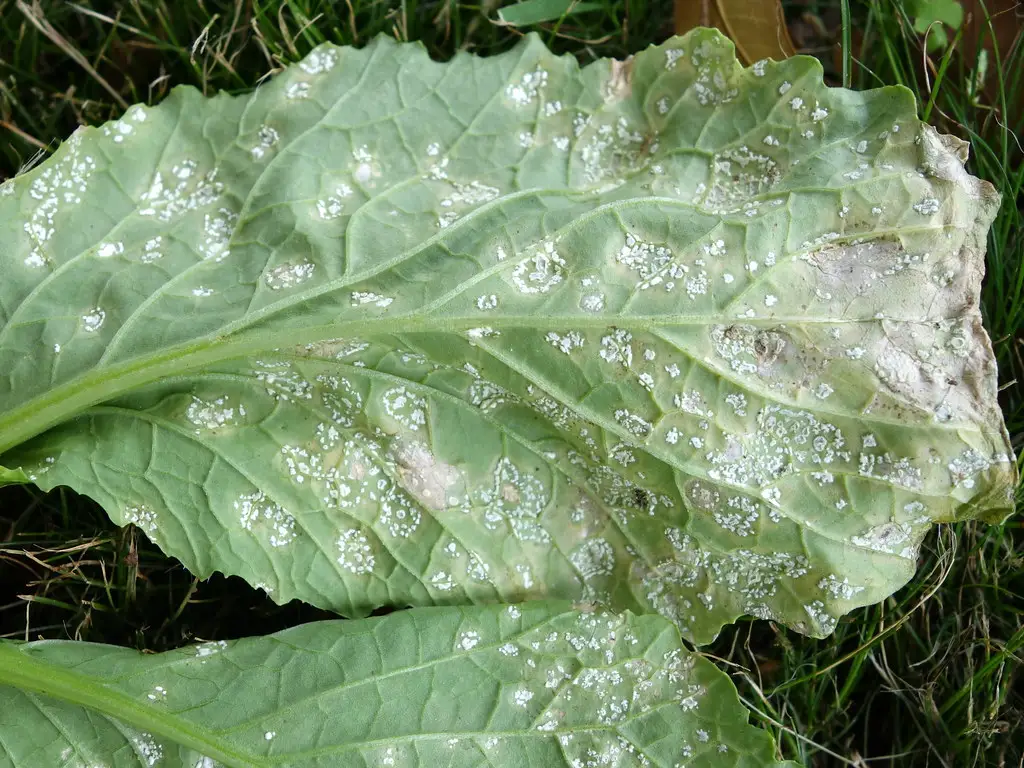
When pustules are arranged in linear rows between the leaf’s veins, the rust is called stripe rust (stripe rust of wheat). In the case of leaf rust, rust pustules are seen mostly on leaves (leaf rust of wheat). In the case of stem rust, rust pustules are seen mostly on stems (stem rust of wheat).
Scab:
The surface of affected tissues becomes rough, and the affected surface is raised due to an abnormal proliferation of cells in the epidermis. The surface has a rusty appearance that is deeply pitted with corky wounds (e.g., apple scabs).
Scald:
Affected plants show lesions, which appear similar to the scalding caused by hot water. Such lesions are mainly bleached and may be partly translucent (e.g., barley scald).
Shot hole:
Leaf spots in which the necrotic (spot) regions drop out, leaving holes in the affected leaves (e.g., peach Stigmina shot hole).
Silver leaf:
A condition in which infected leaves show a metallic luster (e.g., plum silver leaf).
Smut:
Black sooty masses of fungal spores cover the affected plant parts. Several types of smuts are seen, including covered kernel smut: smut sori replacing grains of plants (e.g., covered kernel smut of sorghum);
Long smut:
A reasonably thick membrane covers smut sori and is much longer than the other smuts; they are cylindrical in shape (e.g., long smut of pearl millet);
Loose smut:
Smut sori are covered with a fragile membrane, which breaks easily at the time of spike emergence from the host, exposing a powdery mass of spores (e.g., loose smut of wheat);
Covered smut:
Smut sori are covered with a thick membrane, which resists easy rupturing (covered smut of oats);
Flag smut:
Smut sori occur on the leaf blade, leaf sheath, and culm (flag smut of wheat);
What is Head smut?
The entire ear head is converted into smut sori (head smut of corn);
Kernel smut:
Symptoms appear only on mature grains; minute black pustules or streaks bursting through the glumes are seen; sometimes the entire grain is replaced by a powdery, black mass of smut spores (e.g., kernel smut of rice); and leaf smut: smut sori are formed in infected leaves (leaf smut of rice).
Soft rot:
Soft, water-soaked, irregular lesions appear on tubers, rhizomes, fruits, vegetables, and other storage organs. These lesions are more or less superficial but soon spread and cover the inner tissues. Lesions lead to the rotting of storage organs (e.g., soft rot of potatoes).
Sooty mold:
Black fungal spores stick to the leaf surface, making the foliage appear black and ugly (e.g., sooty mold of citrus, mango, sapota, and guava).
Spindle tuber:
A condition in which the tubers of affected plants are elongated (spindle-shaped) (e.g., Potato spindle tuber viroid disease).
Spotted wilt:
Bronze markings appear on the upper surface of young leaves, and the markings extend from the leaf blade down to the petiole and stem, resulting in wilting of the stem (e.g., tomato spotted wilt).
Stalk rot:
Decay of plant stalks (e.g., corn bacterial stalk rot).
Stem bleeding:
Exudation of sap or resin from an infected stem (e.g., coconut stem bleeding).
Stem gall:
Abnormal outgrowth in the stem (coriander Protomyces stem gall).
Stem rot:
Decay of stem tissues (e.g., rice stem rot, crucifers sclerotinia stem rot).
Stenosis:
In diseased plants, the leaves are highly reduced in size and clustered along the stem (e.g., cotton stenosis).
Sterility:
Suppression of development of reproductive structures. Diseased plants do not produce seeds, fruit, stamens, or pistils (e.g., pigeon pea sterility mosaic disease).
Storage rot:
Decay of storage organs (e.g., corn aspergillus ear and storage rot).
Streak:
Mosaic in leaves along veins looks like a streak (e.g., Tobacco streak virus disease).
Stripe:
A long band of mosaic pattern along the parallel veins of a leaf (e.g., Peanut stripe virus disease).
Stunt:
Retardation of plant growth due to disease (e.g., Peanut stunt virus disease).
Tumors:
Swellings on stems or roots (e.g., Sweet clover root tumor virus disease).
Vein band:
A broad dark-green band along the veins. The remaining lamina surface shows chlorosis (e.g., Strawberry vein banding virus disease).
Vein chlorosis:
Chlorosis is restricted to tissues adjoining the veins in leaves (e.g., Raspberry vein chlorosis virus disease).
Vein clearing:
A clearing or chlorosis of the tissue in or immediately adjacent to the vein (e.g., Petunia vein-clearing virus disease).
Wilt:
In the early stages of wilting, yellowing of leaves is seen. A flaccid or drooping condition of the plant due to disease, wilting may be due to a shortage of water, an impeded supply of nutrients, or excessive transpiration (e.g., cotton fusarium wilt, banana fusarium wilt, crucifers verticillium wilt).
Witches’-broom:
Abnormal proliferation (mass outgrowths) of the branches of woody plants due to disease (e.g., witches’-broom of potato).
Yellows:
Uniform yellow to almost-white discoloration of leaves; yellowing will be the conspicuous symptom in the diseased plant. Yellow pigments may predominate in infected plants (e.g., crucifers, aster yellows, Beet yellows virus disease).
